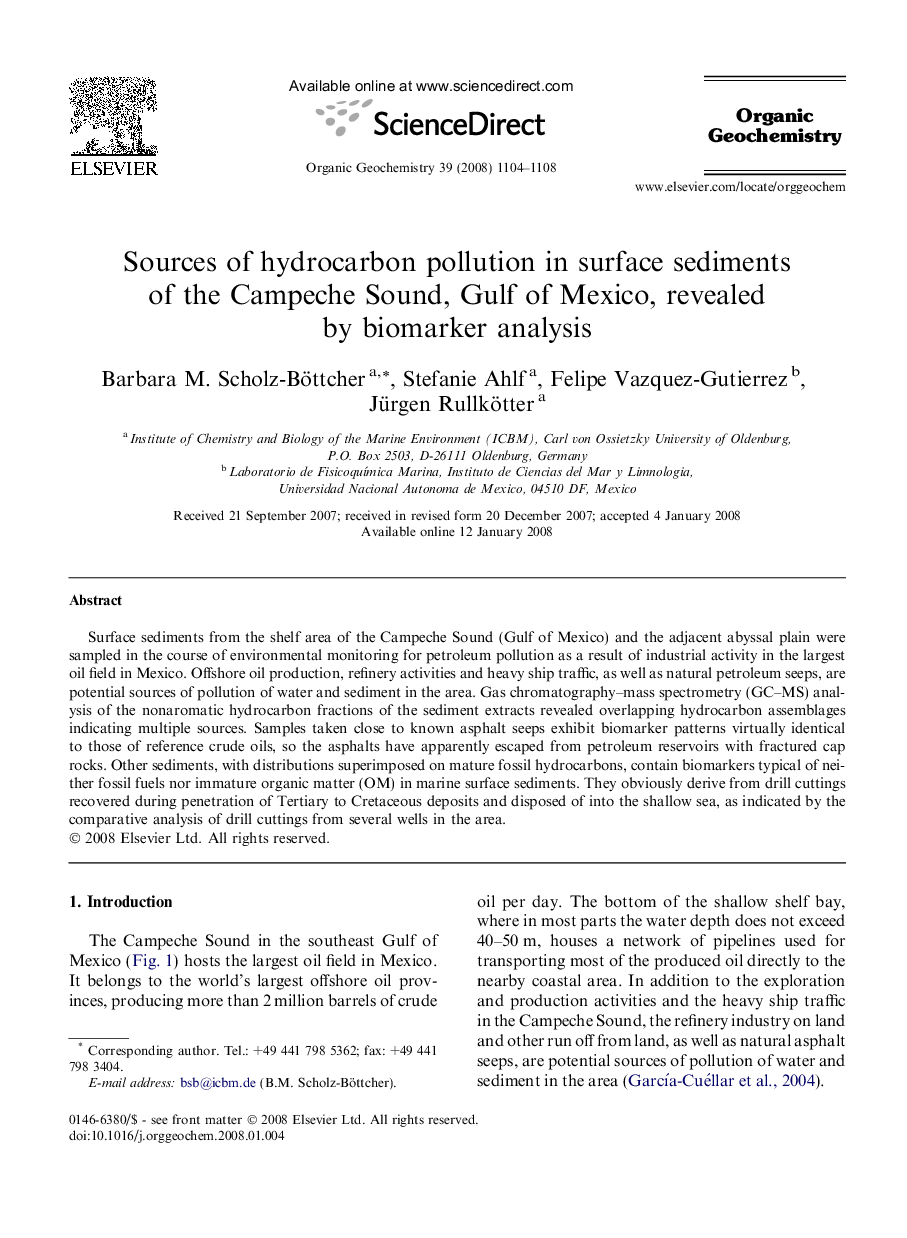| Article ID | Journal | Published Year | Pages | File Type |
|---|---|---|---|---|
| 5162009 | Organic Geochemistry | 2008 | 5 Pages |
Abstract
Surface sediments from the shelf area of the Campeche Sound (Gulf of Mexico) and the adjacent abyssal plain were sampled in the course of environmental monitoring for petroleum pollution as a result of industrial activity in the largest oil field in Mexico. Offshore oil production, refinery activities and heavy ship traffic, as well as natural petroleum seeps, are potential sources of pollution of water and sediment in the area. Gas chromatography-mass spectrometry (GC-MS) analysis of the nonaromatic hydrocarbon fractions of the sediment extracts revealed overlapping hydrocarbon assemblages indicating multiple sources. Samples taken close to known asphalt seeps exhibit biomarker patterns virtually identical to those of reference crude oils, so the asphalts have apparently escaped from petroleum reservoirs with fractured cap rocks. Other sediments, with distributions superimposed on mature fossil hydrocarbons, contain biomarkers typical of neither fossil fuels nor immature organic matter (OM) in marine surface sediments. They obviously derive from drill cuttings recovered during penetration of Tertiary to Cretaceous deposits and disposed of into the shallow sea, as indicated by the comparative analysis of drill cuttings from several wells in the area.
Related Topics
Physical Sciences and Engineering
Chemistry
Organic Chemistry
Authors
Barbara M. Scholz-Böttcher, Stefanie Ahlf, Felipe Vazquez-Gutierrez, Jürgen Rullkötter,
